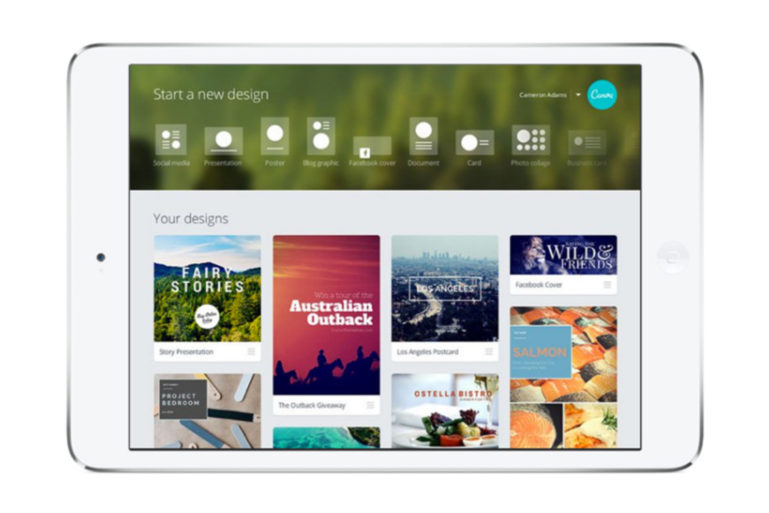
5 Pinterest Tips for Small Business Retailers
In need of a few Pinterest tips for your small business?
Pinterest has quickly grown into one of the main platforms for product research and project planning. Millions of users are turning to the self-described “visual bookmarking tool” to find inspiration and buying opportunities for everything from apparel to home decor. Both online and brick-and- mortar small businesses need to take advantage of this audience. To help you do just that and ensure you’re using this tool to its full advantage, here are 5 Pinterest tips for small business retailers to get you started.
Tip 1: Descriptions are Key to Being Found
Make sure to complete all information about each Pin and Board fully, including the description. The Pinterest search function looks through this information to determine what content is relevant. Be sure to also include keywords relating to each Pin, being as specific as possible. Mention colors, styles, brands, and any other terms someone may search for on Pinterest. This will make your Pins populate more regularly and drive traffic (and customers) to your website. If your business has an e-commerce component that you’re trying to grow with new customers, this is the single most important thing you can do (for free) to gain additional exposure.
Bonus: Google loves Pinterest, so many of your well-tagged Pins may begin populating
in Google search results as well!
Tip 2: Think Vertical, Not Horizontal
Pinterest is all about the visuals, but you’ll want to think vertically. While the horizontal width of a Pin is restricted, you’re able to post images as tall as you’d like. The more space your Pin takes up in a user’s feed, the more likely they are to notice it. Consider a “vertical collage,” where you place several images on top of each other. Depending on your business vertical, you can create style guides or helpful tips that run from top to bottom. Free tools like Canva or PicMonkey make creating a collage simple.
SEE ALSO: 5 Ways to Make Your Small Business Social Media Strategy More Effective

Tip 3: Links are Crucial for Conversions
Pinterest has made a name for itself with businesses based off of impressive conversion statistics. This means that people aren’t only researching products using the platform; they’re also clicking through and completing purchases at an impressive rate.
The optimal setup is to have each Pin link directly to the item’s buy page on your website. To do this, you can use the Pin It button (installed in your web browser) to grab images right from your store. This creates the link automatically and will even pull information from your website for the Pin description. If you’re uploading your own images, you’ll need to edit the pin after creation and place the link into the Website box. Nothing is more frustrating for a consumer than finding a product they love on Pinterest, only to click through to a blog or dead-end website. Allowing them to click directly to the product’s buy page ensures a smooth user experience and can increase conversions dramatically.
Tip 4: Tie Pins to Your In-Store Experience
The buzz about Pinterest continues to spread. Bring this excitement in-store by printing tags to place on the shelf alongside your “Most Pinned” items or other fun distinctions. If you have extra stock of a particular item, this is a great way to draw attention and ensure it sells out quickly at your physical location.
Another great Pinterest tip is to run a contest on Pinterest. By creating a link between your brand’s in-store and online experience, you’ll tap into the same multi-channel selling approach that is working for many of the big box retailers.
SEE ALSO: 5 Social Media Tips for Small Business Success
Tip 5: Promoted Pins are Here
We understand that advertising dollars for a small business have to go far and provide some serious ROI, but don’t rule out Pinterest. Especially if you have one-click conversion linking to your website, this is a great way to place that Pin in front of an eager audience. Remember, more users on Pinterest have a shopping mindset. This means they’re more likely to convert to a sale than from any other social platform. They also, on average, spend more.
Recent improvements to the Pinterest ad manager allow you to target based on interests, keywords, and demographics. You can also target to your site visitors and email list or create new lookalike audiences based off of these groups. Keep in mind, if you have the ability to create segments in your POS system, it’s a great way to target your big spenders or those who haven’t purchased in a while.
Pinterest shows no signs of slowing down, so start incorporating it into your small business-marketing plan. If you find it difficult to keep up with multiple social platforms, consider a marketing tool that allows you to plan and schedule Pins and posts in advance. Hopefully, these Pinterest tips for small business provide a solid base to get started with the fastest growing product search engine. Consumers will continue to utilize this tool to plan their events, decorate their homes, style their outfits, and choose what to read next. If your small business has not tapped into this audience yet, make it a goal to implement a strategy this year. In the fight to remain top-of- mind with your existing base and find new, well-qualified customers, Pinterest has proven itself as a solid choice.
Want to try ShopKeep for yourself?
Just answer a few easy questions.
Need help finding the right point of sale?
Just complete the form. We’ll call you right back to explain how ShopKeep can work for you.
Hit the ground running.Sprinting, in fact!
Read our free, comprehensive guide, Small Business 101, to learn all you need to know about starting a thriving business.

